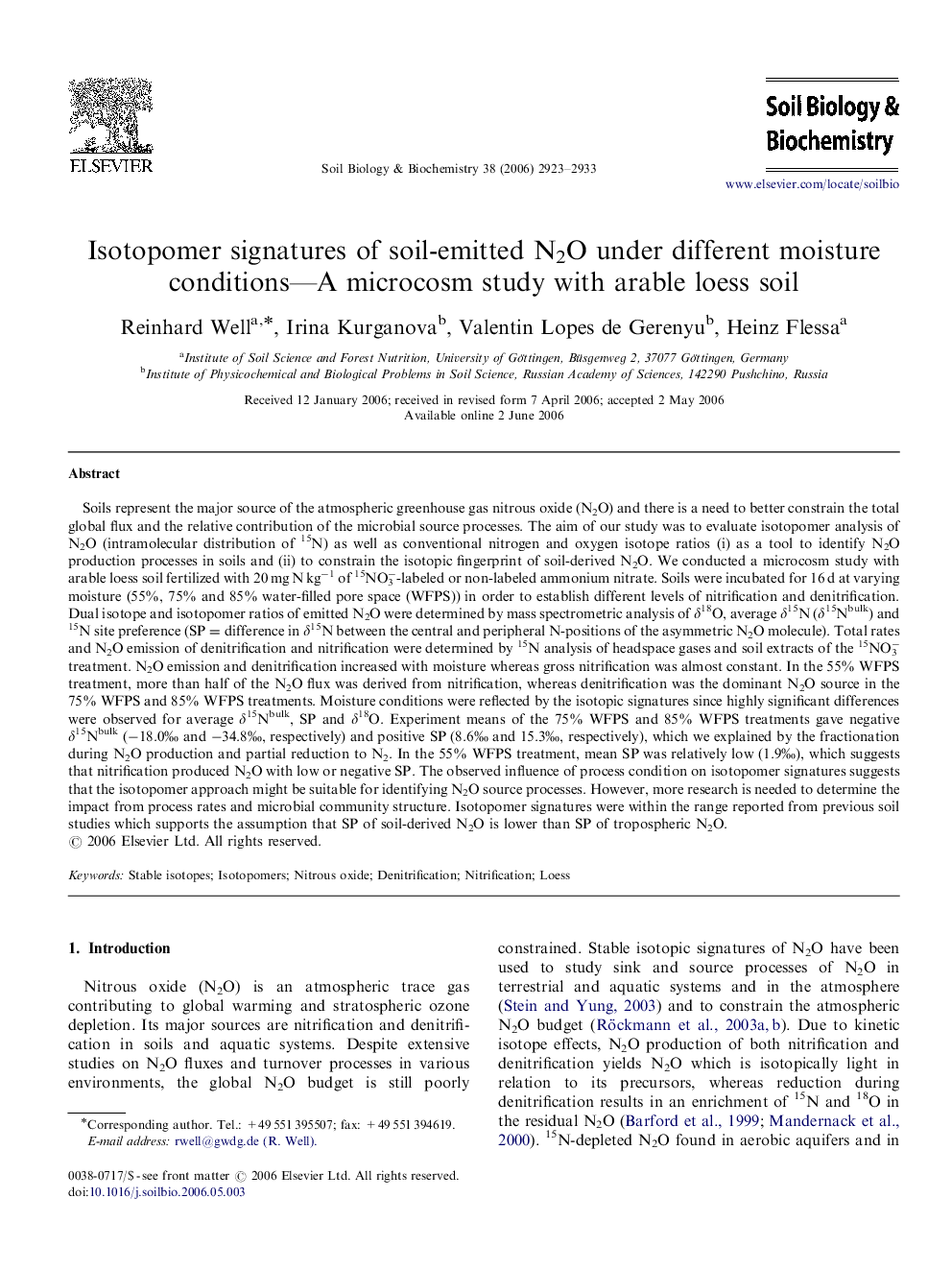| Article ID | Journal | Published Year | Pages | File Type |
|---|---|---|---|---|
| 2027146 | Soil Biology and Biochemistry | 2006 | 11 Pages |
Soils represent the major source of the atmospheric greenhouse gas nitrous oxide (N2O) and there is a need to better constrain the total global flux and the relative contribution of the microbial source processes. The aim of our study was to evaluate isotopomer analysis of N2O (intramolecular distribution of 15N) as well as conventional nitrogen and oxygen isotope ratios (i) as a tool to identify N2O production processes in soils and (ii) to constrain the isotopic fingerprint of soil-derived N2O. We conducted a microcosm study with arable loess soil fertilized with 20 mg N kg−1 of 15NO3−-labeled or non-labeled ammonium nitrate. Soils were incubated for 16 d at varying moisture (55%, 75% and 85% water-filled pore space (WFPS)) in order to establish different levels of nitrification and denitrification. Dual isotope and isotopomer ratios of emitted N2O were determined by mass spectrometric analysis of δ18O, average δ15N (δ15Nbulk) and 15N site preference (SP=difference in δ15N between the central and peripheral N-positions of the asymmetric N2O molecule). Total rates and N2O emission of denitrification and nitrification were determined by 15N analysis of headspace gases and soil extracts of the 15NO3− treatment. N2O emission and denitrification increased with moisture whereas gross nitrification was almost constant. In the 55% WFPS treatment, more than half of the N2O flux was derived from nitrification, whereas denitrification was the dominant N2O source in the 75% WFPS and 85% WFPS treatments. Moisture conditions were reflected by the isotopic signatures since highly significant differences were observed for average δ15Nbulk, SP and δ18O. Experiment means of the 75% WFPS and 85% WFPS treatments gave negative δ15Nbulk (−18.0‰ and −34.8‰, respectively) and positive SP (8.6‰ and 15.3‰, respectively), which we explained by the fractionation during N2O production and partial reduction to N2. In the 55% WFPS treatment, mean SP was relatively low (1.9‰), which suggests that nitrification produced N2O with low or negative SP. The observed influence of process condition on isotopomer signatures suggests that the isotopomer approach might be suitable for identifying N2O source processes. However, more research is needed to determine the impact from process rates and microbial community structure. Isotopomer signatures were within the range reported from previous soil studies which supports the assumption that SP of soil-derived N2O is lower than SP of tropospheric N2O.
